The particle itself would be just the grey threads (or strings) in the picture (no color and a lot thinner of course).
It would fit perfectly inside of a
dodecahedron.
Actual thread (or string) length is about one Ångström and it is fine enough where 10 threads (20 radii) could curl-up into the size of a neutron.
Abstract:
Galaxies have huge spiral arms that encompass the entire galaxy and form a denser region of stars. It is unknown how they form and there a lot of other problems, for instance: As the spiral arms are spinning: why don't they wind-up and dissipate? This is known as the "winding problem"
Also, stars outside of the galactic bulge all orbit at basically the same speed. Neither of those has a complete explanation. "Dark Matter" is the supposed explanation for stars in the galaxy traveling at a much higher speed than they should.
 ~~~~~~~~~~~~
~~~~~~~~~~~~
Logarithmic spiral
~~~~~~~~~~~~
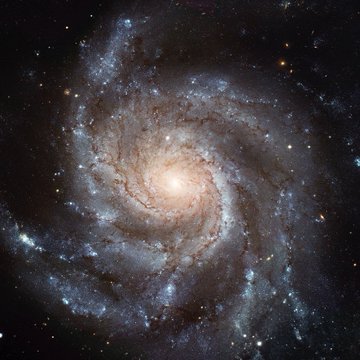
A logarithmic spiral, equiangular spiral, or growth spiral is a self-similar spiral curve that often appears in nature. The logarithmic spiral was first described by Descartes and later extensively investigated by Jacob Bernoulli, who called it Spira mirabilis, "the marvelous spiral".
Galaxy M101 (Messier 101, The Pinwheel Galaxy), 25 million light years away.
Has a beautiful mathematical curve known as a logarithmic spiral.
 ~~~~~~~~~~~~~~~~~~~~~~~~~
~~~~~~~~~~~~~~~~~~~~~~~~~
How are galactic spiral arms created?
~~~~~~~~~~~~~~~~~~~~~~~~~

Stars orbit around the galactic center in elliptical orbits.
The central bulge is also revolving and stars further away from center lag behind in their orbital position.
The result is concentric ellipses that are rotated in relation to each other.
It is easy to see the orbits of nearby stars within a certain distance from center will intersect, that creates an higher density region of stars - the spiral arm
 ~~~~~~~~~~~~~~~~~~~~~~~~~~~
~~~~~~~~~~~~~~~~~~~~~~~~~~~
Orbital Rotation Bulk Intersection Theory
~~~~~~~~~~~~~~~~~~~~~~~~~~~
Why are the stars orbiting at the same speed?
Although the spiral arm looks like a group of stars that are headed for the center - that is NOT what is happening.
Stars are NOT slowed down as they enter the dense star region "like a traffic jam" from density wave theory.
Any star that enters the density wave will be sped up to the speed of the wave.
It is something like a river with all of the water flowing at the same speed, anything that enters the river will assume the same speed as the river.
If a star in the blue orbit below is orbiting clockwise: it will enter and exit the spiral arm at different spots. The entry point is when it first touches the red orbit and the exit is when it traveled all the way to the smaller black orbit.

Stars in the inner black orbit are traveling at about the speed of the outer edge of the bulge.
When the blue orbit intersects with the black orbit: the blue star can be dragged and whipped into the same high speed as the black. Then the blue can transfer the high speed to the red when they intersect at a later date.
Notice the red and blue orbits are completely different and independent of each other. But during the intersection the orbits overlap and they affect each other
Every star in a galaxy will interact with neighboring stars from inner and outer orbits during the journey.
The intersection wave forms a continuous spiral but it is made from billions and billions of individual and overlapping orbit intersections.
Notice this is also a way for a galaxy to form and keep building into larger size.
The orbital intersections force all stars into the same speed and create the spiral arms.
Notice the spiral arm cannot "wind-up" because it is only an emergent property of star intersections, all stars stay basically in their own orbits.
 ~~~~~~~~~~~~~
~~~~~~~~~~~~~
The Rotation Curve
~~~~~~~~~~~~~
In our solar system the planets that are further away from the sun orbit at a slower speed than those closer to the sun.
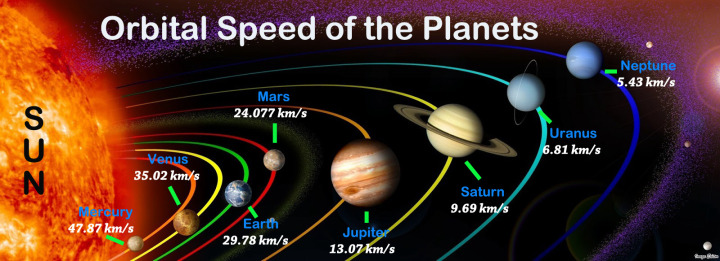
Mercury is flying around the sun at high speed.
Earth is moving slower.
Pluto is creeping along at the pace of a snail.
The speed is based on Newton's law of gravitation...
F = Gm1m2/r^2
F = ma (Force is equal to mass times acceleration).
A greater force will give a greater speed
The rotation curve for the solar system looks like just what is expected.
As the planets get further away their speed decreases.
The Rotation Curve Problem
For some strange reason they thought the speed of stars in galaxies should behave the same way planets do in the solar system.
The same type of curve was expected in galaxies but that did NOT happen.
They completely ignore the fact that the solar system only has about 9 planets with independent orbit.
The galaxy on the other hand has hundreds of billions of stars swirling around together like a huge bowl of soup.
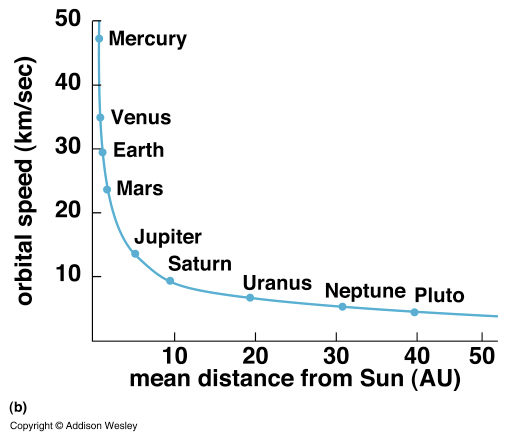
 Bowl of Soup Theory
Bowl of Soup Theory
A typical galactic curve starts out as if it were a solid rotation, then all the speeds stay basically the same.
That means most stars in a galaxy are all traveling at the same speed.
If you stuck a spoon vertically into the middle of a bowl of pea soup and spin twist it, the rotating soup in the center would start to drag the rest of the soup in the bowl up to the same speed.
The soup could all be swirling at the same speed but it would NOT be rotating as a solid because the outer edges have further to travel.
Note: the soup within the radius of the spoon width would actually be rotating as a solid because it is being forced to do so. Further out the speed would be determined by friction from the drag.
Galaxy Rotation Speeds
The overall speed of galaxy rotation is determined by the rotation speed of the central bulge. There are so many stars in the bulge; they orbit as if they were a solid object.
Notice the rotation curve for galaxy center bulge is linear. That is exactly what would happen
The outer edge of the bulge is the determining factor of speed for most outer stars.
Larger galaxy = Larger bulge = Faster bulge edge rotation = Faster galaxy rotation
That is also known as the Tully-Fisher Relation, a larger galaxy will have a faster rotation speed, but they do NOT know why it happens.
Larger galaxies with more stars are also brighter (isn't that obvious, what else could possibly happen?)
Velocity Curves
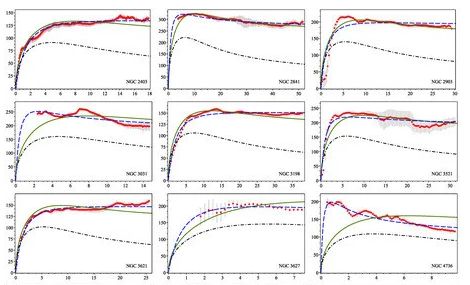
Different galaxies have different velocity curves.
That is because different galaxies have different shapes and the billions and billions of stars have different orbits.
Also, a galaxy of course starts forming from the center and keeps building outward. So, a galaxy that is still forming has not had enough time to whip the stars into similar speeds.
The shape of the galaxy, the age of the galaxy, and the size of the galaxy are some of the determining factors of the different velocity curves.
 ~~~~~~~~~
~~~~~~~~~
The Star Whip
~~~~~~~~~
The stars in galaxies behave more like an ice skating crack-the-whip. Where everyone holds hands and they travel together as a group. They have the same speed.
If a new skater joined the whip: they would be accelerated to the speed of the whip.
That is the way galaxy rotation works.
The star "whip" is the spiral arm.
Remember: the central bulge rotates as if it were a solid object, like a disc.
Example: the outer edge of a Frisbee is spinning faster than the center.
So, as you move away from the galactic center - the speed of the star keeps increasing. But that process stops right at the edge of the bulge.
The outer edge of the bulge is where the spiral arms start to form and from there on out all of the stars travel at about the same speed.
Stars in a galaxy (outside of the bulge) might all be traveling at 100 km/s.
That means although the stars are traveling at the same speed: it takes the stars out at the furthest reaches of the galaxy a lot longer to make an orbit than those right near the bulge (but only because the stars have to travel a much greater distance). It is bowl of soup theory.
During their orbits the stars can enter and exit multiple spiral arms.
The ice skating crack-the-whip is a good visual, except the whip is not actually traveling too much as a whole.

Stars pass through the spiral arm on an angle because the spiral arm is angled (the red, blue, and black elliptical orbits passing through the spiral arm are shown above).
Only the stars that join and exit the whip are moving.
Billions of intersecting star orbits create an emergent spiral arm crack-the-whip. It is the mechanism that has all of the outer stars in a galaxy traveling at approximately the same speed.
Orbital Intersection
Also, the orbits of stars in galaxies intersect. The speed can be transferred out to the furthest reaches of the galaxy then centrifical force and momentum takes over and keeps them at that speed.
That's another one of Newton's laws that do NOT need modification: F = mv^2/r

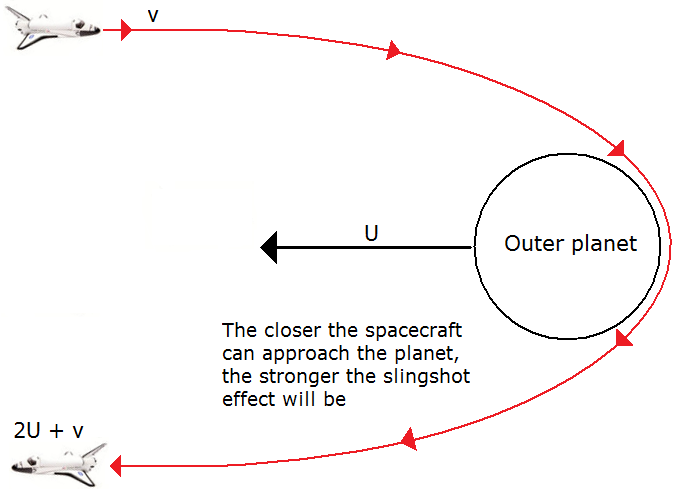 ~~~~~~~~~~~~~
~~~~~~~~~~~~~
The Slingshot Effect
~~~~~~~~~~~~~
Can the rotational curve speed keep increasing with distance?
Meaning orbits keep getting faster with further distance from center?
Yes, that is a regular slingshot effect. As a star approaches the spiral arm wave, its speed can be increased by gravitational pull from the wave - and it does NOT lose the entire speed increase upon exit.
Same as a slingshot speed increase by doing a planetary fly-by.
So, the spiral arm star "whip" can accelerate all stars to the same speed. Then the gravitational slingshot effect can increase speed even further proportionally - further out, more slingshot, more speed - hence the logarithmic spiral.
 ~~~~~~~~~~~~~~~~~
~~~~~~~~~~~~~~~~~
The Case for Dark Matter
~~~~~~~~~~~~~~~~~
Does this rule out dark matter?
No, nothing can rule out dark matter.
The fabric of space is a thread tension network. Dark Matter is excessive threads.
There can be a normal amount, excessive amount, or none (it is all the same but they think only the excess is dark matter).
Substances can...
A) Absorb and emit light
B) Reflect light
C) Convey light
There is nothing else.
Note: A and B are the same.
Invisible means it completely conveys light.
Bouncing-off is reflection.
Blocking light is total absorption; it would be black, not invisible.
Dark matter is a substance but it is invisible - that means it conveys light.
Dark Matter adds to the strength of gravity - that means it is a mechanism of gravity.
Galaxies can have different amounts of dark matter.
Is all that stuff even possible?
Yes, it is easily explained by quantum thread theory.
A galaxy can have:
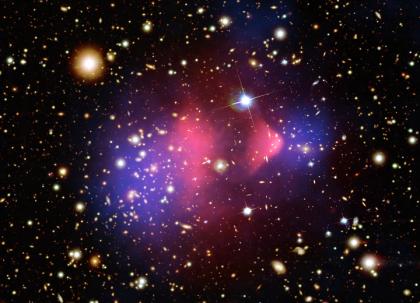
● No dark matter
● Dark matter in a disc
● Dark matter disc and halo
An Halo without a Dark Matter disc is NOT possible.
Dark Matter interacts with gravity.
So, halo dark matter would be pulled into a disc (unless there is a disc there already).
A halo is dark matter disc overflow.
Also the "bullet cluster" is a supposed proof of dark matter.
The excessive amount was separated during a collision.
They show the result with the different colors
The Simulation Hypothesis
If we are in some kind of simulation - like an aliens teenagers science project: then anything including magic can be happening and anything is possible, even nonsense like big bang, standard model "particles", etc. - we will never know the truth.
But, if the world is real - then there definitely is a fabric of space and there would NOT be an exact amount of it. The excesses are dark matter.
 ~~~~~~~~~~~~~
~~~~~~~~~~~~~
The Fabric of Space
~~~~~~~~~~~~~
The fabric of space is a gravitationally-centered thread tension network
(never been ruled out)
Tension = velocity squared x mass / Length
Vibrations traverse network at c
Plug in c, rearrange:
TL = mc^2
| -- inch -- |
Thread length L and mass m are unchangeable constants.
Variable thread tension T will also vary the speed of light c.
Speed of time (as we know it) is also variable.
Source of energy, gravity, all forces, light, you name it.
Gravity is regular thread Tension: T = mc^2 / L
Energy is thread Tension x Length: TL = mc^2
The fabric of space is the threads.
Dark Matter is excess threads.
Speed of light is relative to thread network tension surrounding determining mass (planet, star, system, galaxy, etc.)
Tension = Force = Gravity
NOTE: The one-inch equation: TL = mc^2 and threads explain: gravity, light, energy, time, atoms, heat, bond angles, isotopes, gravitational waves, matter, antimatter, mass, dark energy, dark matter, uncertainty, dimensions, double-slit, vacuum fluctuations, vacuum catastrophe, the four forces, curved space, entanglement, gravitational lensing, electron shell configuration, periodic table 18 columns, protons, neutrons, electrons, neutrinos, fringe patterns, bose–einstein condensate, ball lightning, emergence, binding energy, alpha beta gamma radiation, atomic structures, absorption emission spectrum, induced fields, interference, photo electric effect, polarization of light, wave / particle duality, zeeman effect, zero-point energy, superstrings 10 dimensions, magnets / compass needle, etc.
Question: How is it possible that something can explain all those things?
Answer: It is easy to explain everything with the correct theory of everything.
 ~~~~~~~~~~
~~~~~~~~~~
Magnetic Field
~~~~~~~~~~
With a simple magnetic compass you can easily verify:
● Something is filling supposed empty space.
● Whatever is filling space is also lining-up
● Whatever is lining-up also has a direction.
Nothing can explain it except Quantum Thread Theory.
Think tensioned tennis net - If you pull on opposite diagonal corners: the corkscrew twist threads will align.
That's how and why magnetic "fields" work.
Faraday's "Lines of force" are real.
A magnetic "field" lines-up but also has a compass direction.
Got that?
Something is filling space and it is lining up and it has direction.
That eliminates most of mainstream physics
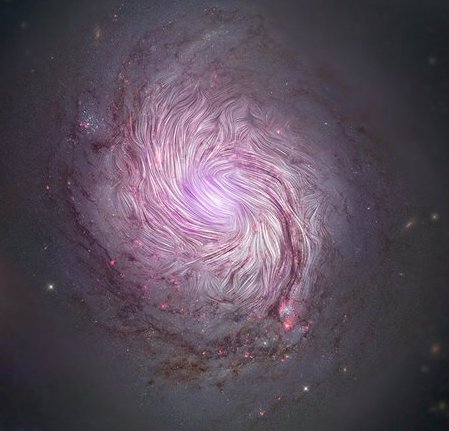
It's easy to see the magnetic field stretching and distorting in the composite image of M77.
When massive objects plow through the fabric of space they can stretch and distort it.
That can create magnetic fields, gravitational waves, and massive vibrations of electromagnetic energy, etc.
Today Chandra is gazing at a galaxy in Cetus. Nearby in the sky is galaxy M77. Magnetic fields shown as streamlines over a composite image of the galaxy imply that the gravitational forces that created the galaxy's shape are also compressing the galaxy's magnetic field. (1/2)
 ~~~~~~~~~~~~~~~~~
~~~~~~~~~~~~~~~~~
DIMENSIONS AND UNITS
~~~~~~~~~~~~~~~~~
........mass = [M] = kilograms
......length = [L] = meters
........time = [T] = seconds
...frequency = [T^-1] = seconds^-1
.......speed = [L]/[T] ...... = m/s
acceleration = [L]/[T^2] .... = m/s^2
....momentum = [M][L]/[T] ... = kg_m/s
.......force = [M][L]/[T^2] . = kg_m/s^2
......energy = [M][L^2]/[T^2] = kg_m^2/s^2
.......power = [M][L^2]/[T^3] = kg_m^2/s^3
Tension is a Force. Gravity is a Force. A Newton is a Unit of Force.
Velocity is a vector but the dimensions are the same as speed = [L]/[T]
The words like "speed" are only names of what the dimensions on the right are called.
You cannot have anything like pure length, force nor energy. (Pure mass? Yes, that is OK?)
Notice mass
[M]
is not equal to energy
[M][L^2]/[T^2] ...the vibration is missing
Here is what
Émilie du Châtelet's famous E = mc^2 equation really looks like...
[M][L^2]/[T^2] = [M][L^2]/[T^2]
Energy = Energy
If you could just lop-off parts of an equation and claim whatever is left is equal...
i.e. "energy equals mass" then you could also say that "power equals mass" and so does momentum and force. It is really stupid to think like that.
Speed is NOT equal to length. Speed is equal to length divided by time.
Energy is NOT equal to mass. Energy is equal to mass times speed squared.
If you hear anyone claim mass and energy are equal or they are interchangeable or they are flip-sides of the same coin: this is what they are actually saying:
[M] = [M][L^2]/[T^2] <-- wrong (of course that is wrong)
Question: Can you convert energy into mass?
Answer: No, of course NOT. "Mass" would be a guitar string. If you pluck it: the vibrations are the energy.
Can you covert the guitar string vibrations into a guitar string? No, it already is a guitar string.
READ THIS CAREFULLY: Energy is just a word for vibrating mass (or substance). It's like "RED" - you can have a beautiful redheaded girlfriend, a red ball or a red firetruck - but you cannot have just "red."
Could there be a blob of "red" floating around in outer space? NO! it would have to be made from something.
RED is a word to describe a property of something else.
ENERGY is a word to describe a property of something else.
The term "Pure Energy" came from Mr.Spock on Star Trek - that is SciFi.
 ~~~~
~~~~
Epilog
~~~~
Now you know how galactic spirals form, why the stars are the same speed, and what really happens inside a density wave.
Orbital Intersection Theory completely eliminates a need for mond.
Got that? No need to modify Newton's equations, they work just fine, Newton was an effin' genius.
Note: As always - if you steal my original ideas - I will come to your house.
Yes, I know, Orbital Rotation Bulk Intersection Theory - ORBIT Theory, that's a tautology.
P.S. Remember: Energy can also be TL = Tension times Length.
Here is a regular thread tension formula...
Tension = velocity squared x mass / Length.
If we plug in c and rearrange we get the one-inch equation...
TL = mc^2
|--inch--|
tension [M][L]/[T^2] * length [L] = mass [M] * speed c^2 [L^2]/[T^2]
http://www.mccelt.com/quantum-boom-theory.php
icbwaaotbidnts
Add a Comment
 A logarithmic spiral, equiangular spiral, or growth spiral is a self-similar spiral curve that often appears in nature. The logarithmic spiral was first described by Descartes and later extensively investigated by Jacob Bernoulli, who called it Spira mirabilis, "the marvelous spiral".
A logarithmic spiral, equiangular spiral, or growth spiral is a self-similar spiral curve that often appears in nature. The logarithmic spiral was first described by Descartes and later extensively investigated by Jacob Bernoulli, who called it Spira mirabilis, "the marvelous spiral".







 ~~~~~~~~~~~~~
~~~~~~~~~~~~~

 It's easy to see the magnetic field stretching and distorting in the composite image of M77.
It's easy to see the magnetic field stretching and distorting in the composite image of M77.